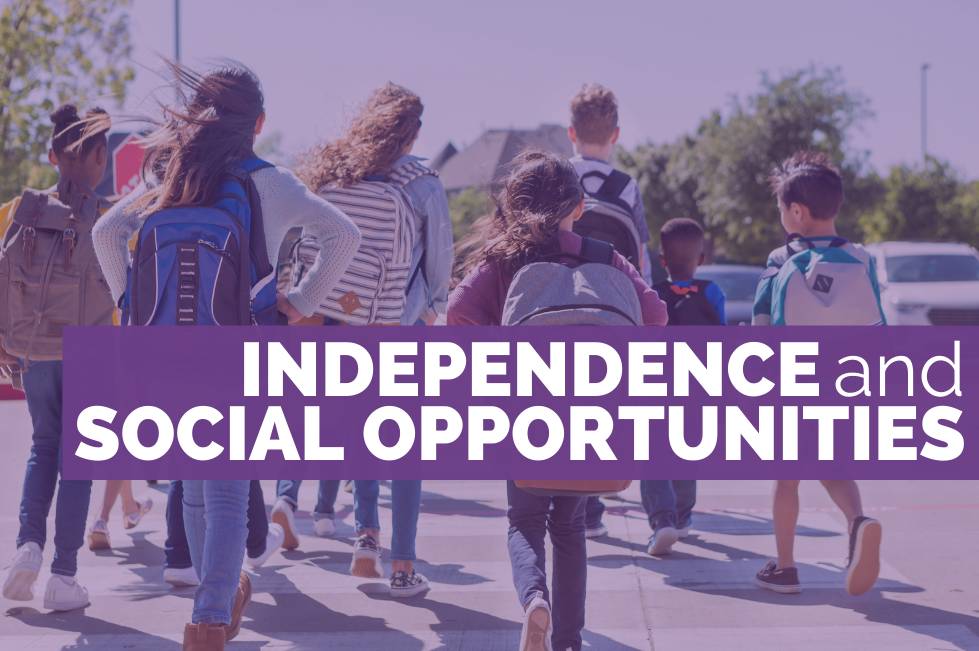Independence and Social Opportunities

This article originally appeared in START Connecting in December 2020.
What goal is most important for your child to have a quality life? We have asked this of numerous parents and school professionals during our trainings over the past 20 years. The top two answers are invariably – “I want my child to be independent and I want my child to have meaningful social relationships.” If you ask kids this same question, you will get a similar answer – “I want to do things my way and I want friends.” Although we could list other important goals such as getting a job and being happy, it is hard to imagine achieving most goals without some level of independence and social connection.
What allows someone to be independent? There are so many skills involved in being independent and many are not directly taught to students with autism. Too often, we lower expectations and go into helper mode without presuming competence and offering the dignity of risk. What does that mean? First, presuming competence means to assume a person has the capacity to understand and learn—regardless of whether you see tangible evidence that this is the case. It’s assuming the person is capable; they just need the right teaching and support to help them succeed. This starts with high expectations along with opportunities to do what other students of the same age are doing. Second, the dignity of risk is the right to take risks when engaging in life experiences, and the right to fail in those activities the same way everyone else does. Would any of us have learned how to choose our own outfits, shop at the grocery store, ride a bike, go on a date, or interview for a job if we were not given the opportunity to at least try it, more than once? The goal was not to do these things perfectly. It was to have the satisfaction of saying, “I did it” whether it worked well or not.
Working toward independence cuts across all ages and all abilities. A three-year-old needs to move toward independence (why do you think they say “no” so much?) just as a sixteen-year-old does. This applies to every person, regardless of the way they are impacted by their disability or life circumstances. The primary way we offer opportunities for independence is to allow students to be in the same setting as their peers and interact in a meaningful way. That is also how we build social connections. Students should not be separated to practice the skills they will need in life, they need to have lived experiences every day.
How do we develop meaningful independence in a social world?
- Give opportunities that are similar to same age peers both at home and in school. School staff and families can use the START Passport [*replaced with the iQuest since the publication of this article] to work collaboratively on goals that are typical of same-age peers. Start with a goal, complete a task analysis, and identify times to teach. Peers can be excellent models and provide a reality check to ensure that the goals are socially valid (i.e. do they make sense and are they “cool”).
- Identify the routines where independence is needed and teach and support these skills. This means breaking down routines and tasks and teaching the steps. You only know if you are making progress if you take data. You can get started teaching independence by selecting a routine and using the START Independence data form to make decisions.
- Place students in typical settings in school and the community and connect them with peers. Kids learn typical independence behaviors and social interactions when interacting with peers. Being involved in a Peer to Peer program is the best way to do this. Teach peers how to model as friends, not helpers.
- Teach students to self-advocate. This reduces the need for helpers and gives students a sense of their own ability to be independent and access what they need and want. START has several Self-Advocacy resources to help school staff and parents teach and promote self-advocacy. Also check out the START Connecting article on self-advocacy.
- Look at other resources that support independence for students with autism:
- Ten Ways to Build Independence – Autism Speaks
- Increasing Independence in ASD – Hume et al. (2009)
- It’s All About Independent Functioning! Practical Strategies that Foster Independence for Students with ASD – Tri-State Webinar
- Teaching Independence to Children with Autism – Kentucky Autism Training Center Webinar
Written by: Amy Matthews, Ph.D., BCBA - Project Director
